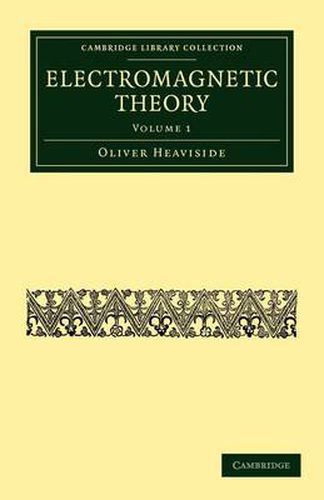Readings Newsletter
Become a Readings Member to make your shopping experience even easier.
Sign in or sign up for free!
You’re not far away from qualifying for FREE standard shipping within Australia
You’ve qualified for FREE standard shipping within Australia
The cart is loading…






Oliver Heaviside FRS (1850-1925) was a scientific maverick and a gifted self-taught electrical engineer, physicist and mathematician. He patented the co-axial cable, pioneered the use of complex numbers for circuit analysis, and reworked Maxwell’s field equations into a more concise format. In 1891 the Royal Society made him a Fellow for his mathematical descriptions of electromagnetic phenomena. Along with Arthur Kennelly, he also predicted the existence of the ionosphere. Often dismissed by his contemporaries, his work achieved wider recognition when he received the inaugural Faraday Medal in 1922. Published 1893 this is the first of three volumes that bring together Heaviside’s contributions to electromagnetic theory. It introduces the subject at length, and features his first description of vector analysis and the reworking of Maxwell’s field equations into the form we know today.
$9.00 standard shipping within Australia
FREE standard shipping within Australia for orders over $100.00
Express & International shipping calculated at checkout
Oliver Heaviside FRS (1850-1925) was a scientific maverick and a gifted self-taught electrical engineer, physicist and mathematician. He patented the co-axial cable, pioneered the use of complex numbers for circuit analysis, and reworked Maxwell’s field equations into a more concise format. In 1891 the Royal Society made him a Fellow for his mathematical descriptions of electromagnetic phenomena. Along with Arthur Kennelly, he also predicted the existence of the ionosphere. Often dismissed by his contemporaries, his work achieved wider recognition when he received the inaugural Faraday Medal in 1922. Published 1893 this is the first of three volumes that bring together Heaviside’s contributions to electromagnetic theory. It introduces the subject at length, and features his first description of vector analysis and the reworking of Maxwell’s field equations into the form we know today.